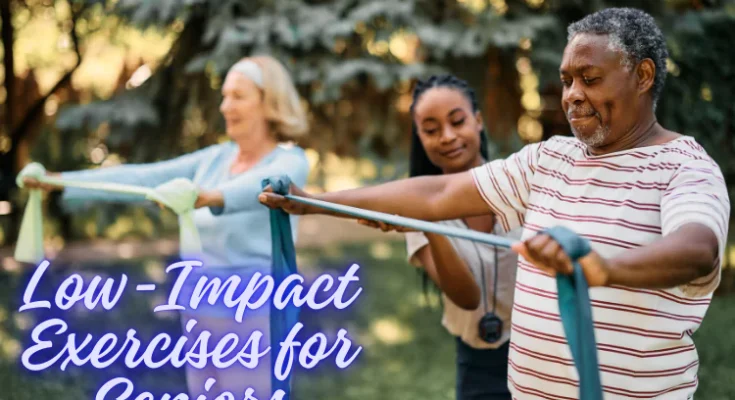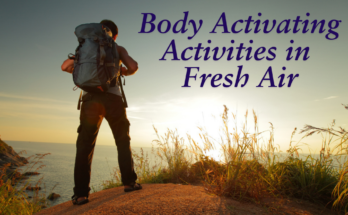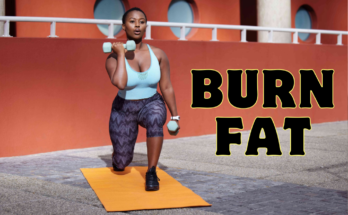Hello People! Do you need recommendations for low-impact workouts that are positive for one’s overall well-being?
In your senior years, it is important to help your body and spirit continue to “move” and live the best possible life. There are so many people aging today, and they are comprised of elderly citizens who are willing to perform several exercises that would enable them to develop muscle mass for working out.
This is where low-impact workouts come in handy since they are the best workouts and are recommended for older people since they do not affect them. Here, you will find out about the proper exercise routines for older people and their benefits for the body, as well as how to begin.
Table of Contents
Low-Impact Exercise for the Elderly
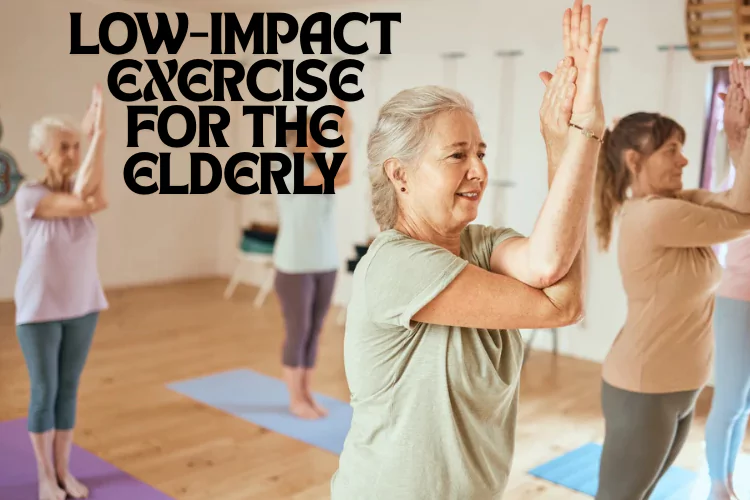
Improved Balance and Flexibility: Another benefit of movement is that it creates balance, which minimizes seniors’ falls.
Enhanced Cardiovascular Health: These exercises will put a lot of stress on the heart muscle without fastening the cardiovascular system beyond what is achievable.
Mental Health Boost: Physical exercises release endorphins, which makes seniors happier and more relaxed.
Walking
It is not-loading on the joints and may be performed anywhere; it does not need to be done on any particular piece of equipment. A 30-minute walk is good for circulation, and the heart rates are up in the right perspective.
Tips for Seniors:
Comfortable shoes should be worn in a way that you do not get injured in the process.
To build up good cardiovascular conditioning, some simple strolls; therefore, extending the distance traveled will contribute.
A lot is said about walking preventing bad thoughts; it is much better to do so in parks.
Swimming and Water Aerobics
For this reason, water-borne exercises are suitable for older individuals. Water does not place much pressure on the joints, especially while moving and exercising. Swimming and water aerobics involve muscle pulling, pumping up the rate of the heartbeat, and stretching.
An empirical research study by the American Senior Fitness Association revealed that senior citizens have less pain and more joint stiffness after water exercises.
Tips for Seniors:
This is why water aerobics classes are held at community pools or fitness centers that are more accessible to seniors.
First, some of the Grueling exercises include leg kicking or water walking to graduate to the next level.
In case of the need for higher buoyancy, then maximize the use of floats.
Yoga
Yoga encompasses many more aerobic exercises, including polishing, bending, stretching, and balancing, coupled with taking deep breaths. Various forms of yoga are unique to the senior market, and these are chair yoga and restorative yoga, which do not exert effort on the body.
Popular Yoga Styles for Seniors:
Chair Yoga: Sitting postures make mobility-impaired older individuals active without putting extra pressure on their bodies.
Hatha Yoga: This type of yoga is characterized by slow-moving exercises, which will be suitable for the new dancers in the course.
Restorative Yoga: For a long time, the tactical postures have relieved pain and assisted in becoming more limber.
Tai Chi
It uses slow movements. Besides being affordable, Tai Chi is also referred to as ‘running meditation.’ It enhances muscular strength, flexibility, and concentration, and for these reasons, it is recommendable for the elderly.
Studies show that Tai Chi decreases the risk of falling in the elderly population by 50%.
Tips for Seniors:
Go get Tai Chi for new beginners or senior citizens if you are a new learner or a senior citizen.
Best to be conscious of actions that take longer time and focus most on balance and coordination.
The idea here is to make slow but sure progress so that they will require as many as 10-15 minutes a day to practice.
Cycling (Indoor or Outdoors / Stationary)
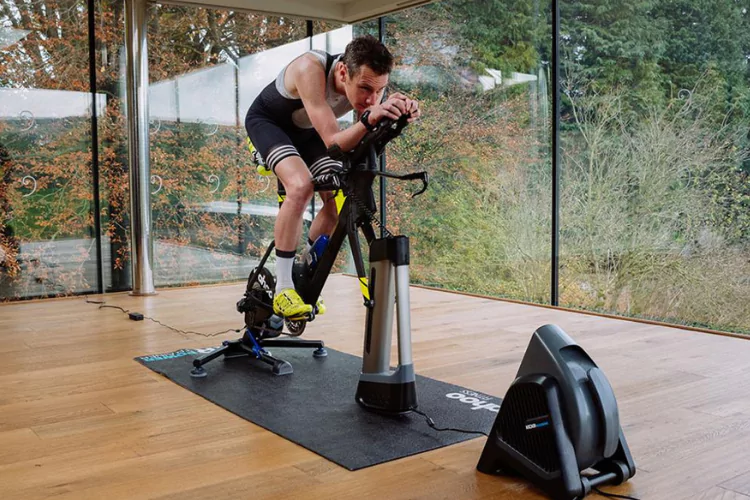
Cycling exercises are excellent cardiovascular workouts and extremely friendly to the joints. They are particularly essential for elders and other classes of people as they offer an opportunity to exercise without being a UserRepository.
Getting a paper edited by a skilled professional does not necessarily protect seniors and other classes of people from the strain associated with unfavorable roads or traffic interruptions.
Tips for Seniors:
The sitting height on a stationary bike should also be set at an appropriate level for the person in the biking position.
It was advised to start with low resistance and then progressively build up the strength to handle the resistance.
Outdoor cycling, particularly with a bicycle, requires one to avoid danger; therefore, one should use a trial bicycle or less congested roads.
Pilates
Strengthening the core, flexibility, and balance are some of Pilates’s many aspects, which make It ideal for seniors. Most Pilates exercises are low impact and can be easily adapted to different fitness abilities, relying on devices such as resistance tubes or weights.
Popular Pilates Exercises for Seniors:
- Leg Circles: Build up the muscles of the legs and enhance flexibility at the hips.
- Knee Lifts: Exercise the middle of the body and strengthen the back.
- Roll Downs: Loosen the back muscles and make the tummy muscles firm.
Resistance Band Training
Resistance bands are an easy-to-use, low-impact solution to muscle strengthening and enhancing balance. They provide some opposition to the trainee but do not place pressure on the joints, making them good for seniors who wish to build muscle without having to employ weights.
Strength and conditioning in seniors was conducted to assess the potential of resistance bands and determine improvement in Strength, flexibility, and balance.
Tips for Seniors:
- The first step is to use light stretch bands, then gradually advance to the heavy ones.
- If you want a complete-body exercise, muscle up with motions such as bicep curls, leg presses, and shoulder raises.
- Or try to flex our practice in a seated or standing position as it may be comfortable.
Dancing
Most people consider dancing as just a recreational activity that involves moving music while, in fact, it is a low-intensity exercise. It [dancing] may help with leading to better heart health, coordination, and mood; types include ballroom, line dancing, or Zumba to accommodate all intensity levels.
Tips for Seniors:
- Instead, search for sessions that are aimed at senior citizens or senior dance classes.
- Choose slow rhythms if you are a beginner in dancing.
- Get motivated to dance and meet friends or have a partner to dance with.
- Low-Impact Workout Exercise Guidelines for Older Adult Beginners.
Regardless of the various difficulties that a senior might face in beginning an exercise program, there are several ways of getting started safely and having fun.
- Consult a Doctor: All exercise regimes for seniors should start with a doctor’s consultation, especially if the senior suffers from any ailment or physical disability.
- Warm Up and Cool Down: Most movements need to be gradually eased into to avoid any pulls or strains, and likewise for the end of an exercise session.
- Listen to Your Body: The workout should be stimulating, but not when the body is complaining of deep-set severe pain.
- Start Slowly: It reduces the level of stress or strain on muscles and bones and is characterized by a steady increase in both frequency and duration of exercise.
Frequency of Exercising in Older Men and Women
The CDC suggests that older adults perform 150 minutes or 30 minutes daily, five days a week, of moderate-intensity physical activity. Strength training: The seniors should prefer at least two or more days per week.
It goes without saying that exercises such as Tai Chi or yoga should ideally be performed daily to be most effective.
Mental Health Part of the New Lifestyle of Activity
While most people are well versed in the health benefits that come with exercise, there is so much more than that for mental well-being. Exercise does help with stress levels as well as anxiety and depression symptoms and the general mood of the person.
The Anxiety and Depression Association of America (ADAA) also states that older adults who perform physical activity have lower rates of depression, 20-30% less than normal older adults.
Getting Started Creating a Routine That Works
For seniors ready to start their fitness journey, here are some tips to create a routine that feels achievable and rewarding:
- Set Clear Goals: Start with — for instance, walking three times a week, then progress to frequency or intensity of the workouts.
- Create a Schedule: Continuity is the essence of reaping a good harvest in business.
- Key Performance Indicators: Exercise should be planned for certain days and certain times during the day.
- Incorporate Variety: Cycling the low-impact exercises can help prevent boredom and also ensure that other muscles of the body are targeted.
- Exercise with Friends: When people exercise with friends or in group classes, their motivation and, hence, exercise increases.
- Celebrate Progress: Record small successes consistent with your goals to maintain your morale throughout the training.
Sources:
- Facts about exercise for seniors for CDC or Center for Disease Control and Prevention.
- We are stepping up Information on the National Institutes of Health (NIH) regarding the favorable effects of exercise on chronic disease in seniors.
- ASF kits a post on the benefits of water exercises with a special focus on joints.
- An article done by The Journal of Strength and Conditioning Research on the effects of resistance band training.
- From the Anxiety and Depression Association of America (ADAA) about the mental health effects of exercising among the elderly.
The following video explains about Physical and Mental Health:
Conclusion
Circuit-bearing exercises are a great form of low-impact exercise that older adults should engage in for Strength and flexibility as well as bodily health. These slow-movement activities, such as walking, yoga, swimming, and Tai Chiitas, have numerous advantages but little impact on the joints.
Through engaging in different activities, seniors are able to speak to their health needs by simply exercising to boost circulation and avoid falls and poor mental health conditions.
From the experiences shared in this paper, the right exercise can increase confidence, gain independence, and generally improve the quality of life. For those who start a fitness program and for those who return to it, including low-impact workouts has great advantages.
FAQ
1. What is low impact, and why is it beneficial for seniors?
Low-impact exercises affect the joints with little pressure, so they can suit senior people with arthritis or other complications. They assist in bettering Cardiovascular fitness, power, pliability, and balance and also prevent injuries.
2. How often should older adults exercise?
According to the CDC, American senior citizens should engage in at least 150 minutes of moderate-intensity exercise every week, which means 30 minutes daily five days a week. Strengthening exercise is also good and should be done at least two times per week.
3. Are elements of low-intensity exercises appropriate for the reduction of body weight?
Of course, walking, swimming, and cycling are good for calorie burning and metabolism, which means that they can help to lose weight without actually putting much stress on one’s body.

